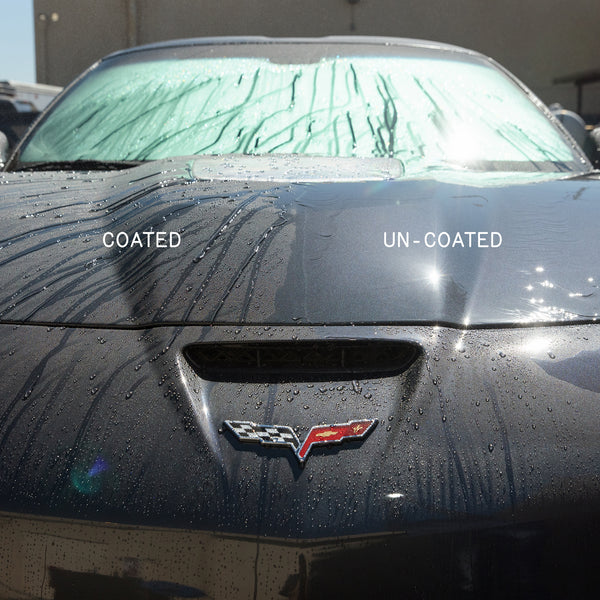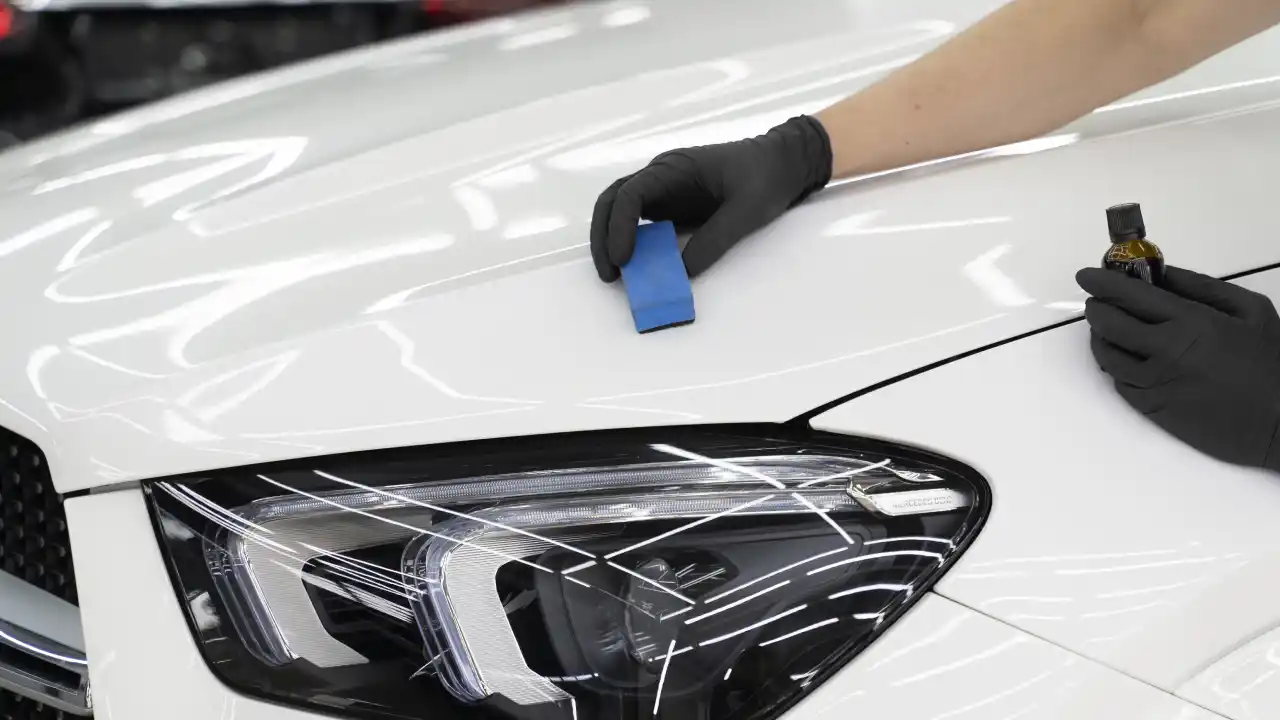The Role of Ceramic Coating in Keeping a Perfect Finish on Your Auto
The Role of Ceramic Coating in Keeping a Perfect Finish on Your Auto
Blog Article
Discovering the Science Behind Ceramic Covering and Its Influence On Automobile Describing
The application of ceramic layer in automobile detailing stands for a considerable innovation in vehicle treatment, rooted in its sophisticated chemical properties, mostly silica dioxide and titanium dioxide. As we check out the details of the application process and the long-lasting implications for vehicle upkeep, it comes to be clear that the selection of ceramic finish can essentially alter one's approach to car treatment.
What Is Ceramic Finish?
Ceramic layer is a contemporary service that has actually acquired appeal in the automobile detailing sector for its capacity to supply long-lasting defense for car surface areas. This advanced safety layer is generally made up of silica dioxide (SiO2), which forms a solid bond with the vehicle's paint, producing a sturdy shield versus environmental impurities. Unlike traditional wax or sealants, ceramic layers provide premium resistance to UV rays, chemical stains, and physical abrasions.
The application of ceramic finish involves a meticulous procedure, where the lorry's surface is extensively cleaned up and decontaminated prior to the coating is applied (Ceramic Coating). When healed, the coating improves the car's gloss, depth, and quality, giving a showroom-quality finish that lasts for several years. Among the key advantages of ceramic layer is its hydrophobic residential properties, which fend off water and dirt, making upkeep less complicated and lowering the frequency of washes
The Chemistry of Ceramic Finishing
A basic facet of ceramic coating hinges on its chemical structure, largely characterized by the presence of silica dioxide (SiO2) This compound is integral to the formation of a resilient, protective layer that bonds chemically to the automobile's surface area. When used, the SiO2 molecules go through a procedure recognized as polymerization, in which they create a network of interconnected frameworks. This causes a robust, hydrophobic surface that wards off water and impurities.
Along with SiO2, several ceramic coatings incorporate titanium dioxide (TiO2) and various other ingredients to improve their performance qualities. TiO2, as an example, contributes to increased solidity and chemical resistance. The communication between these compounds produces a special molecular structure that provides a high level of protection versus ecological aspects such as UV rays, acid rainfall, and oxidation.
Moreover, the application process frequently involves a meticulous prep work of the surface to ensure optimum adhesion of the covering. This chemistry not just makes sure a lasting coating however likewise improves the visual appeal of the vehicle. Understanding the elaborate chemistry behind ceramic layers is vital for detailing experts who intend to give premium security and longevity for their clients' automobiles.
Benefits of Ceramic Layer
While outlining experts usually highlight the benefits of ceramic finishings, their advantages prolong far beyond visual appeals. Ceramic finishes produce a hydrophobic surface that wards off crud, dust, and water, substantially decreasing the frequency of washes and the initiative called for to preserve a car's appearance.
Moreover, ceramic finishes improve the long life of the car's surface. Unlike standard waxes or sealants, which might last a more tips here few months, ceramic finishings can withstand for many years, providing a long-lasting remedy for automobile treatment. This longevity equates to cost financial savings, as proprietors are much less likely to require frequent reapplication.
Additionally, ceramic layers are resistant to chemical spots and etching, which can take place from acidic materials like bird droppings or tree sap. This resistance not just maintains the vehicle's aesthetic appeals yet likewise decreases prospective damage - Ceramic Coating. Overall, the investment in ceramic finish uses cars and truck owners a substantial return in terms of defense, simplicity of maintenance, and long-lasting aesthetic charm, making it a progressively preferred option in the world of vehicle detailing
Application Refine Clarified

Once the surface area is appropriately prepared, the ceramic finishing can be used. Utilizing an applicator pad, the specialist uses the covering in small sections, functioning in a crosshatch pattern to make sure even insurance coverage.
After applying the finish, the lorry should be allowed to treat, which may take a number of hours to a number of days, relying on the certain item utilized. During this duration, it is vital to keep the vehicle away from moisture and impurities. Once treated, the ceramic finish forms a strong bond with the paint, giving improved protection and a glossy finish. Proper application is important to make the most of the durability and efficiency of the ceramic covering.

Long-term Effect On Car Care
The long-term impact of ceramic finishing on automobile care is significant, as it essentially changes just how owners maintain their vehicles. By read what he said producing a long lasting, hydrophobic layer on the vehicle's surface, ceramic coverings minimize the adherence of dust, grime, and impurities. This property decreases the frequency of cleaning needed, ultimately conserving water and cleaning items.
Additionally, the UV protection provided by ceramic layers helps to avoid oxidation and fading of the vehicle's paint, maintaining its visual appeal and resale value over time - Ceramic Coating. This protective barrier likewise decreases the possibility of scrapes and swirl marks, which are common issues in typical paint coatings
Additionally, ceramic finishes facilitate easier upkeep, permitting proprietors to cleanse their vehicles with marginal effort. The smooth surface area makes it hard for contaminants to bond, enabling less complex elimination during regular cleaning.
Over time, the financial investment in ceramic covering might lead to cost savings in car treatment services and products. In general, the enduring advantages of ceramic layers not just improve the look of cars but additionally add to a more effective and lasting approach to vehicle maintenance.
Final Thought
To conclude, the application of ceramic covering stands for a substantial development in automobile describing, driven by its one-of-a-kind chemical make-up of silica dioxide and titanium dioxide. This modern technology not just boosts the visual allure of vehicles but also provides robust security against environmental dangers and use. The long-lasting benefits, including decreased maintenance frequency and improved resilience, underscore the worth of ceramic coverings as a vital investment for maintaining vehicle look and honesty with time.

Report this page